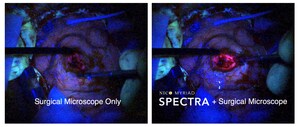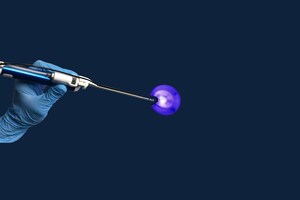Neurosurgery Device Maker Completes $15 Million Capital Raise to Address Increasing Market Demand of New Technologies for Tumor and Stroke
INDIANAPOLIS, Feb. 23, 2016 /PRNewswire/ -- NICO Corporation, an Indianapolis-based neurosurgery medical device manufacturer, recently completed a $15 million capital raise important to the expansion of newly developed markets created by their technologies and systems approach to subcortical brain surgery. The funding nearly doubles the total amount raised by NICO and provides a strong position to aggressively respond to a market enthusiastic about technologies that have documented clinical and economic outcomes.
Funding will support multiple business priorities, including the advancement of promising clinical data1 delivered through a randomized controlled trial, expanded customer training of NICO technology, commercialization of new products, geographic expansion beyond North America, and additional staff to support critical new initiatives. The randomized controlled trial will evaluate the clinical effectiveness of early surgical intervention of spontaneous intracerebral hemorrhage (ICH) using the BrainPath Approach™ versus a "watch and wait" medical management approach to treatment.
"Our documented and published results prove that we can and do deliver on the new healthcare model known as Triple Aim, and our investors have shown they believe in our results," said Jim Pearson, president and CEO of NICO. "We have a solid foundation of clinical and economic evidence, and that evidence continues to grow, giving us added momentum for controlled market expansion and deliberate steps toward setting a new standard of care in neurosurgery."
Nearly $10 million of the funds raised came from River Cities Capital Funds (RCCF) and Rose-Hulman Institute of Technology, both investors in NICO since the company formed in 2008. RCCF increased its investment by 400 percent over previous contributions during this capital raise.
"NICO represents one of those rare opportunities that a company can both create and define a standard of care in a space where none currently exists and establish a medical device franchise in one of the last untapped frontiers of the human body, the brain," said Carter McNabb, managing director of River Cities Capital Funds. "There is growing clinical consensus that using the BrainPath Approach for subcortical access, resection and tissue preservation will be the foundation of a new standard of care. That reality, combined with the exceptional team at NICO, makes this one of our most exciting device investments."
The neurosurgery device market is expected to grow at a brisk rate over the next decade as hospitals expand neurosurgery capabilities to keep pace with evolving and more sophisticated imaging, technology integration, and less traumatic surgical approaches. In a traditionally slow-to-change environment, market growth in neurosurgery only happens through documented outcomes demonstrating positive results that support device efficacy through improved clinical outcomes and economic value.2 Data collected through the randomized controlled trial will offer documented outcomes through prospective data showing the best course of action for patients treated for hemorrhagic stroke.
The randomized controlled trial is being led by the Emory Stroke Center of Emory University hospitals and the Marcus Stroke & Neuroscience Center of Grady Memorial Hospital. Hemorrhagic stroke is the deadliest, most costly and debilitating form of stroke. More than 50 major healthcare centers have applied to participate in the trial that will accommodate only 10-15 qualified healthcare centers.
The incident rate of hemorrhagic stroke and brain tumor in the U.S. is approaching 500,000 patients annually. More than 50 percent of those patients have few, if any, effective surgical treatment options due to location and lack of ability to access the abnormality in this very complex area of the body without creating significant deficits. Hemorrhagic stroke is the deadliest form of stroke with an early mortality rate of 32-50 percent, and many brain tumor patients are at risk of sustaining additional damage to delicate brain tissue and fiber tracts when using current surgical approaches and techniques.
The BrainPath technology expands treatment capabilities and improves on current surgical techniques, allowing for minimally disruptive access to these abnormalities located in the subcortical space. Over 3,000 BrainPath procedures have been successfully performed in the U.S. to date.
There are more than 35 hospitals and healthcare institutions currently trained on the BrainPath Approach and at least 50 more are in the process of implementing the technology through their corporate training programs. Training on this technology and approach includes a one-day course with didactic and hands-on experience using the trans-sulcal surgical approach with BrainPath to access primary and secondary brain tumors, intraventricular tumors and cysts, and vascular abnormalities that cause ICH, including primary bleeds (better known as a hemorrhagic stroke) and secondary bleeds from other causes, such as arteriovenous malformation and trauma.
Learn more about NICO technologies and the integrated BrainPath Approach by visiting www.NICOneuro.com, and watch surgical procedure videos showing atraumatic access with BrainPath on YouTube at NICOneuroCorp.
1 Labib M, et al. The safety and efficacy of image-guided trans-sulcal radial corridors for hematoma evacuation: a multicenter study. Late breaking oral presentation LB12 at: 2015 International Stroke Conference; February 11-13, 2015; Nashville, TN.
2 MedTech 360 Report; DecisionResourcesGroup.com. August 2015.
Contact: Sue Goin
[email protected]
(317) 402-8690
SOURCE NICO Corporation
Related Links
WANT YOUR COMPANY'S NEWS FEATURED ON PRNEWSWIRE.COM?
Newsrooms &
Influencers
Digital Media
Outlets
Journalists
Opted In






Share this article